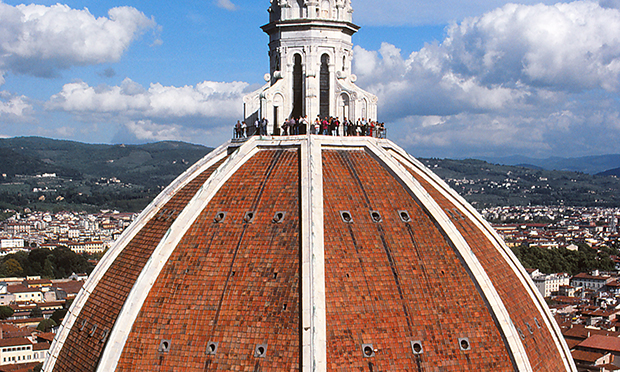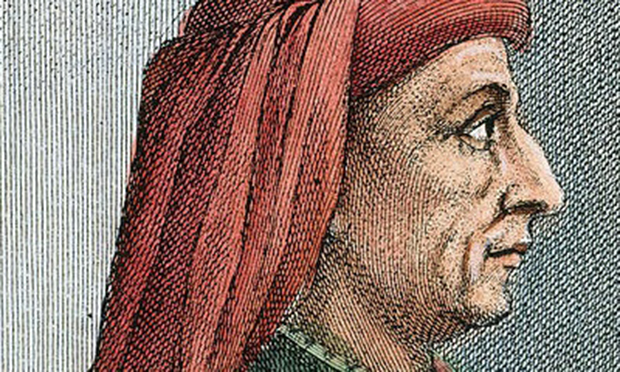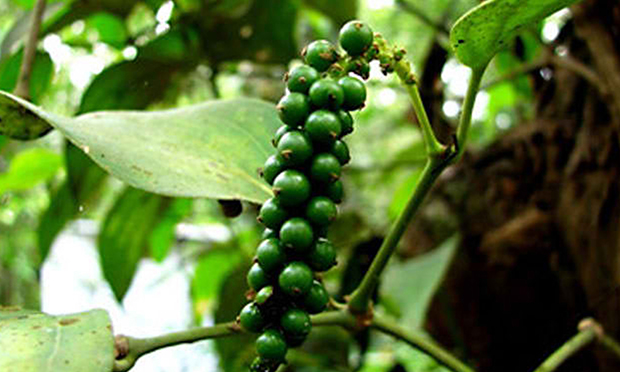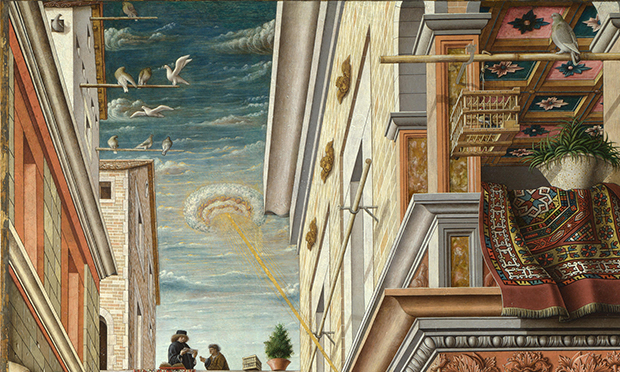Carry on up the Cupola

Photograph: Creative Commons
Peposo, a pungent dish using a lot of black peppercorns, comes from Tuscany with a rather silly creation myth.
It is claimed that peposo was ‘discovered’ by Filippo Brunelleschi, when masterminding the amazing feat of getting a dome onto the rebuilt cathedral of Santa Maria del Fiore in Florence.
It is almost beyond belief that the city fathers should commission and build the enormous drum in 1366 and then heave a sigh of relief and leave someone else to dream up how to get a cupola on top of it.
I had always assumed that a typically gifted Renaissance architect would come along and submit an elegant plan and the project would go smoothly ahead to universal acclaim, but Ross King’s book Brunelleschi’s Dome tells a different story. Precious little truth, beauty and goodness in this account of a small-town project rife with professional and personal rivalries and treachery, with squabbles over money, timing and the workforce.

Brunelleschi, Pippo to his friends, seems to have been something of a weirdo – charismatic, immensely gifted, temperamental but loyal. Trained as a goldsmith not an architect, he somehow had the personality to persuade the city fathers to go along with his vision of a huge dome erected entirely without scaffolding, an almost unimaginable feat of engineering based on his innovative use of herring-bone sections of brickwork with the capacity to take the stresses and strains of the terrifying structure.
This is where the peposo myth comes in, probably the invention of an imaginative tourist bureau in Impruneta, a small town about 13 kilometres from Florence, where a specially fine quality of clay was made into tiles, and where Brunelleschi sourced the bricks for the Duomo.
He is said to have found some terracotta pots of a delicious stew, simmering away at the mouth of the brick furnace where tiles were baked, put there by the labourers.
Brunelleschi reputedly carted them back home for the delectation of his own workforce. Most unlikely, as we shall see.
Jamie’s version of peposo is simple and delicious: cook some of the cheaper cuts of beef very slowly in lots of Chianti wine with plenty of garlic, seasoned with a huge amount of lightly crushed black peppercorns, allowing the cooking juices to reduce to make a dense, pungent sauce.

This is a survival of a medieval dish, and versions of it are still made all over the north of Italy, often as a sauce, from the peverada of Venice to the peara of Verona and Treviso and the pepata of Padua.
The pungent, sweet and sour, spicy, fragrant black dish from the Middle Ages was made with rich broth or gravy from game birds or beasts, thickened with deeply dark toasted bread and dried fruit – prunes, raisins, figs, enriched with fortified wine, sharpened with vinegar or lemon juice, reduced to make a sauce along with the expensive black peppercorns and equally costly cloves, nutmeg, cinnamon and mace. Much more subtle than our peposo.
This style of cooking was well known to the elite of Brunelleschi’s Florence, but not to the lower orders who cooked delicious food using pulses like lentils, peas, beans – black-eyed beans, the white ones we now associate with Tuscany, came along later from the New World, Phaseolus vulgaris, which you can read about in Beans, a History by Ken Albala – root vegetables, cabbages and onions, enlivened with local pungent herbs, and sometimes the odd scrap of bacon or salame.
So the problem with the Brunelleschi peposo myth is in the meat bubbling away in Jamie’s pot, which was unlikely to have been the inexpensive cuts of beef we are used to, since oxen were used as beasts of burden, bred for their weight and strength as rural power machines, like tractors, not for the pot.
The beautiful white Chianina cattle that were part of the landscape for centuries until only a few decades ago, are now reared as tourist attractions or for the sadly over-rated bistecca fiorentina.

Image: Creative Commons
The workforce on the Duomo would have been lucky to get bread and dried figs or cheese for their midday meal. Meat was an expensive luxury for them, while a frugal Florentine housewife would have found a baby lamb, or a young piglet was cheaper, as farmers had to sell off the young animals they could not afford to feed, whereas paradoxically today these milk-fed babies are very costly, as producers of factory farmed meat have to balance weight, cost of food and so forth, to get maximum profits, so a big beast can bring in more than a baby.
Back home, Brunelleschi had the bright idea of resolving another serious lunch-hour problem – the danger for his workforce in having to come all the way down from working on the dome, well over 100 yards above ground, higher than Centrepoint, at midday, then totter perilously back hours later, full of bread and chianti.
He set up a works canteen high up under the slowly rising dome, offering provisions and only watered wine, raised up by a clockwork mechanism of his invention, powered by one single ox. This poor beast was not quite the treat we have been led to believe, and the workmen were unimpressed by all this control freakery, but the mighty dome rose up into the sky, thanks to the engineering skills and vision of the charismatic Filippo.
And lunch hour got more adventurous as inventive workers swung around on illicit contraptions, rigged up with ropes and pulleys, to catch unaware pigeons for the pot, a better bet than bread and cheese, and for free – maybe enjoyed with a cheap version of the posh sauce, made with caramelised onions and burnt toast.
Another ancient delicacy, black with dark ingredients, is panpepato, a version of panforte, with pepper and other spices in a mixture of nuts, dried fruits and breadcrumbs mixed with honey, and later some chocolate to add to the gloom.
